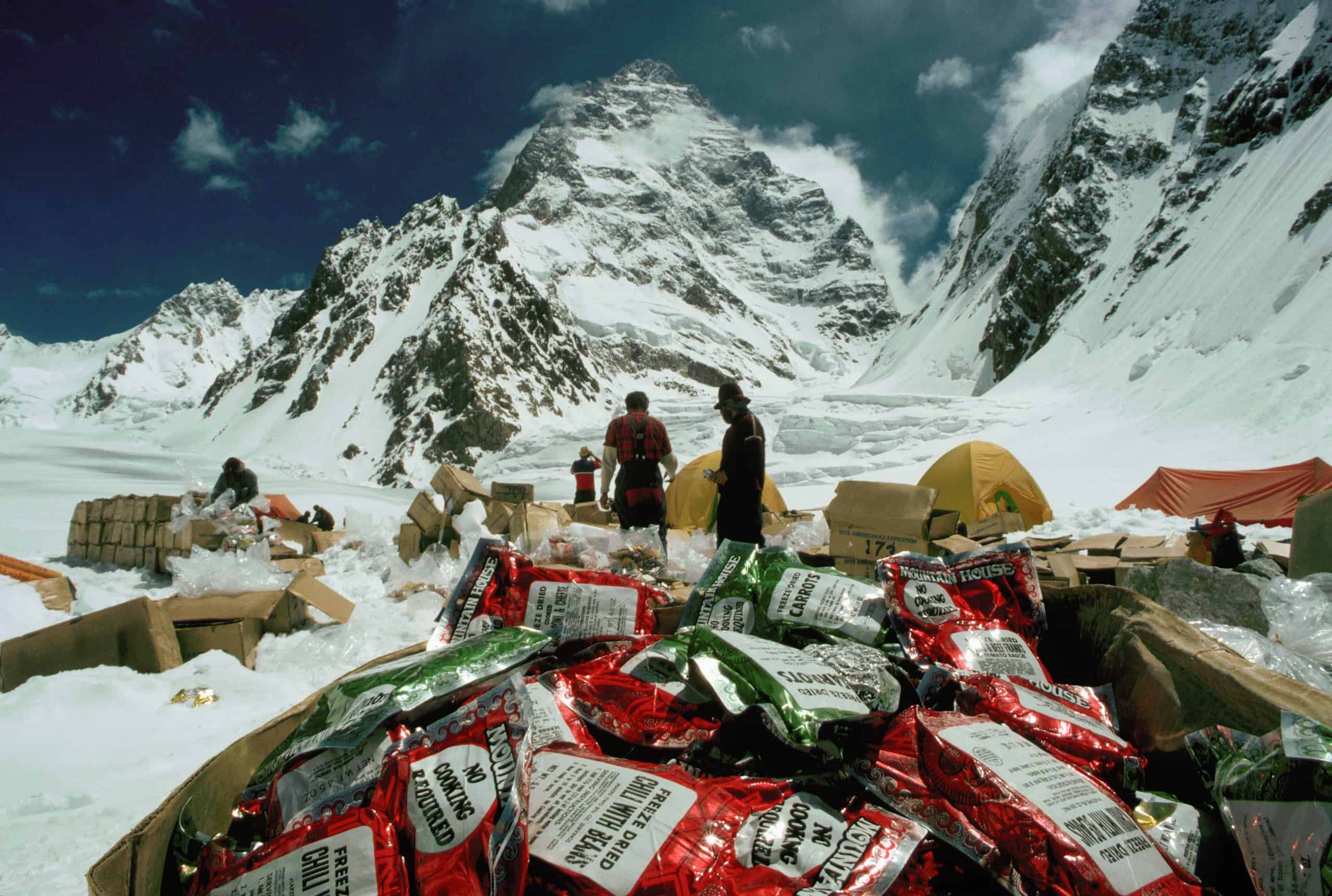
Among the many challenges a climber’s body must face when traveling to high mountains is proper nutrition. How do professional climbers address this issue?
According to a study conducted among mountaineers, the diet has a great impact on the performance of the body during intense physical exertion in the mountains. Interestingly, a climber’s performance and fitness is as much as one-fifth dependent on a balanced diet.
Food plays an important role not only during the journey itself, but also during the preparations for the expedition. The diet of a mountain climber should include products high in protein, carbohydrates, healthy fats and vitamins.
It is estimated that an athlete burns about 11 calories per minute while climbing. In practice, this means that his caloric demand for a several-hour climb in high mountains is very high. Another important issue is the fact that the meal should be light, easily digestible and not consist of food that lingers in the stomach for a long time. For this reason, in the diet of the athlete, both in the training phase and during the expedition itself, there can be no legumes, some fruits or large amounts of dairy products.
In high-mountain conditions your caloric demand may increase even by 25% just from the fact of being on the…
Published by Form for the Summit Friday, September 20, 2019
Before going on a mountain expedition, you should carefully plan the quantity, frequency and nutritional value of each meal. The diet should be tailored to the type of physical activity, such as trekking, alpine climbing or bouldering. In the mountains, the athlete is usually on his or her own, so the right choice of products can make daily life on the expedition much easier.
During climbing, the diet is usually based on three types of meals: breakfast, snacks during the journey, and dinner. One of the most efficient ways to eat in the mountains are freeze-dried meals. The products are lightweight, easy to pack, and require little cooking. Most of them are poured into boiling water and after waiting a few minutes you can start eating.
An important advantage of this type of nutrition is that it retains its natural taste and texture, and provides the body with all the necessary microelements, vitamins and minerals. The process of dehydrating the food allows it to retain as much as 90% of the standard nutritional values, so it is ideal for climbing in high mountains, where the conditions for preparing meals are extremely demanding.
The phrase “assault food” refers to the food that an athlete prepares for themselves while climbing. Assault snacks play an extremely important role during exercise by providing the body with essential energy and nutritional value. By eating snacks on a regular basis, the climber maintains a steady energy level in the body and extends his or her workout time.
The assault food menu mainly includes energy bars, nuts, nuts, dried fruits, energy gels, cookies or candies. Commonly unhealthy and high-calorie snacks are extremely desirable in high mountains, because they provide the body with large amounts of energy needed for climbing. Products for climbers are usually adapted to the freezing temperatures outside, and their packages are easy to open with gloves on.
Snacks should be small, so they can be easily stored in pockets, backpack flap or waist belt pocket.
Independent planning of nutrition for a few days in the high mountains is an extremely difficult task, and without proper experience may be virtually impossible. For this reason, it is worth going to a sports nutritionist, who will not only determine the exact caloric needs of the athlete’s body, but will also choose the ideal diet.
In order to search for specific products, it is worth looking at the websites of stores with sports equipment and online forums for climbers. Advice from more experienced colleagues may prove invaluable during the expedition.